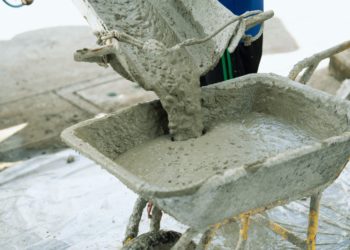Bolivia is heading into a runoff election that will determine which of two conservative candidates will lead the country after two decades of leftist rule.
In the first round in August, Rodrigo Paz, a right-leaning centrist and son of a former president, emerged as a surprise front-runner, climbing from the bottom of the polls to secure 32 percent of the vote. He will face off against a conservative former president, Jorge Tuto Quiroga.
A recent poll shows Mr. Quiroga in the lead; however, the race is widely considered a tossup.
What are the most important issues?
The economy dominates the election, with rising prices, fuel shortages and difficulties in gaining access to imported goods and U.S. dollars fueling widespread discontent.
The high cost of government-financed fuel subsidies has long been discussed, but dismantling them is considered politically costly.
Beyond economics, many voters express frustration with the South American country’s turbulent politics and a legal system that many consider dysfunctional.
While the economy is central, Carlos Saavedra, a Bolivian political analyst, said that there was a broader crisis with lack of faith in the country’s governance.
“There is a political crisis, there is an institutional crisis, there is a social crisis,” he said. Whoever wins, he added, “you’re going to have a firefighter government, one that will come in to put out fires.”
Who are the candidates?
Both candidates lean right, but with differing approaches. Mr. Quiroga, educated in the United States and experienced internationally, appeals to the business sector and supports deeper economic overhauls.
He has proposed privatizing the energy sector, which was placed under state control 20 years ago by the governing Movement Toward Socialism, known by its Spanish acronym MAS.
That conservative economic approach “makes some Bolivians very anxious as to what will happen with some of the social programs that could be jeopardized,” said Gustavo Flores-Macías, a professor of Latin American politics at the University of Maryland.
If Mr. Quiroga wins, he added, “it’s because Bolivians are really so tired of the status quo of the economy that they’re willing to give that more extreme economic vision a try.”
Mr. Paz has sought to appeal to former MAS supporters, rural voters, older voters and less affluent Bolivians. He has pledged to protect social programs and manage Bolivia’s resources more efficiently, rather than relying on international organizations like the International Monetary Fund.
Despite the MAS’s decline, many Bolivians still value its focus on disadvantaged, rural and Indigenous communities, and its skepticism toward privatization and U.S. influence.
The party’s struggles do not “mean that people have now decided that they’ll embrace a right-of-center presidency,” Mr. Flores-Macías said.
What the race means for relations with the United States.
U.S. Secretary of State Marco Rubio called the runoff election a “promising development” after decades “of anti-American, hostile government.”
Mr. Quiroga has emphasized improving relations with Washington and attracting international investment. His pro-business stance and proposals for economic liberalization resonate strongly with younger Bolivians.
Older voters, who recall privatization and economic policies of the 1980s and 1990s that led to price increases and high unemployment, tend to support Mr. Paz.
While Mr. Paz has expressed openness toward the United States, it has not been a central focus of his campaign, which could give him a boost in Sunday’s vote, said Verónica Rocha, a Bolivian political analyst.
“He has tried to show that he is very much a man of the people,” she said.
The vice-presidential race has produced the real fireworks.
Much of the campaign’s contentiousness has centered on the vice-presidential candidates.
Edmand Lara, Mr. Paz’s running mate and a former police captain, has drawn attention for his outsider status and social media savvy. During the first round, some voters said they found Mr. Lara more appealing than Mr. Paz.
Mr. Lara’s blunt style has made him popular, though he has faced scrutiny over his political ambitions and criticism of the news media.
“He has often said that he wanted to be president,” Ms. Rocha said. “He has a political culture that does not necessarily adhere to liberal democratic parameters.”
Mr. Quiroga’s running mate, Juan Pablo Velasco, a tech entrepreneur, is widely seen as diligent and well prepared.
But he has been dogged by the resurfacing of several social media posts from 15 years ago containing racist content.
One post used a derogatory term for highland Indigenous Bolivians and said that all of them “must be killed.”
Mr. Velasco has denied writing the posts, though two Bolivian fact-checking outlets verified them.
Analysts say the controversy underscores lingering issues of race and class in a country with a large Indigenous population and an elite that is largely white.
“He’s a young businessman from a conservative business family,” said Mr. Saavedra, the analyst. “In a way, he is the antithesis of the working class. But he touched on an issue that runs deep in Bolivia, which is racism.”
When will we know results?
Voting on Sunday runs from 8 a.m. to 4 p.m. Results are expected to start coming in around 8 p.m.
Genevieve Glatsky is a reporter for The Times, based in Bogotá, Colombia.
The post Bolivia Heads to the Polls: Here’s What to Know appeared first on New York Times.




